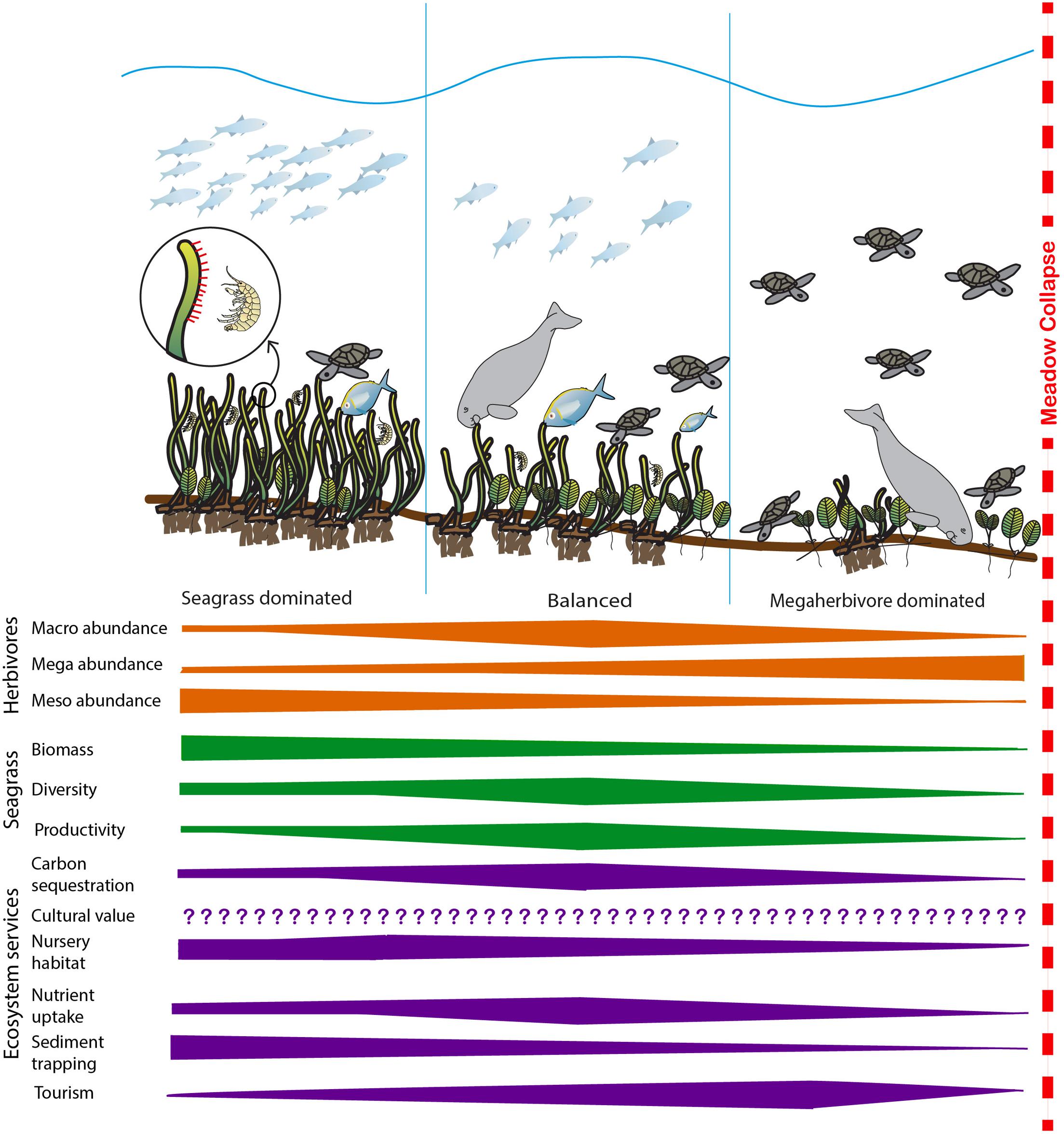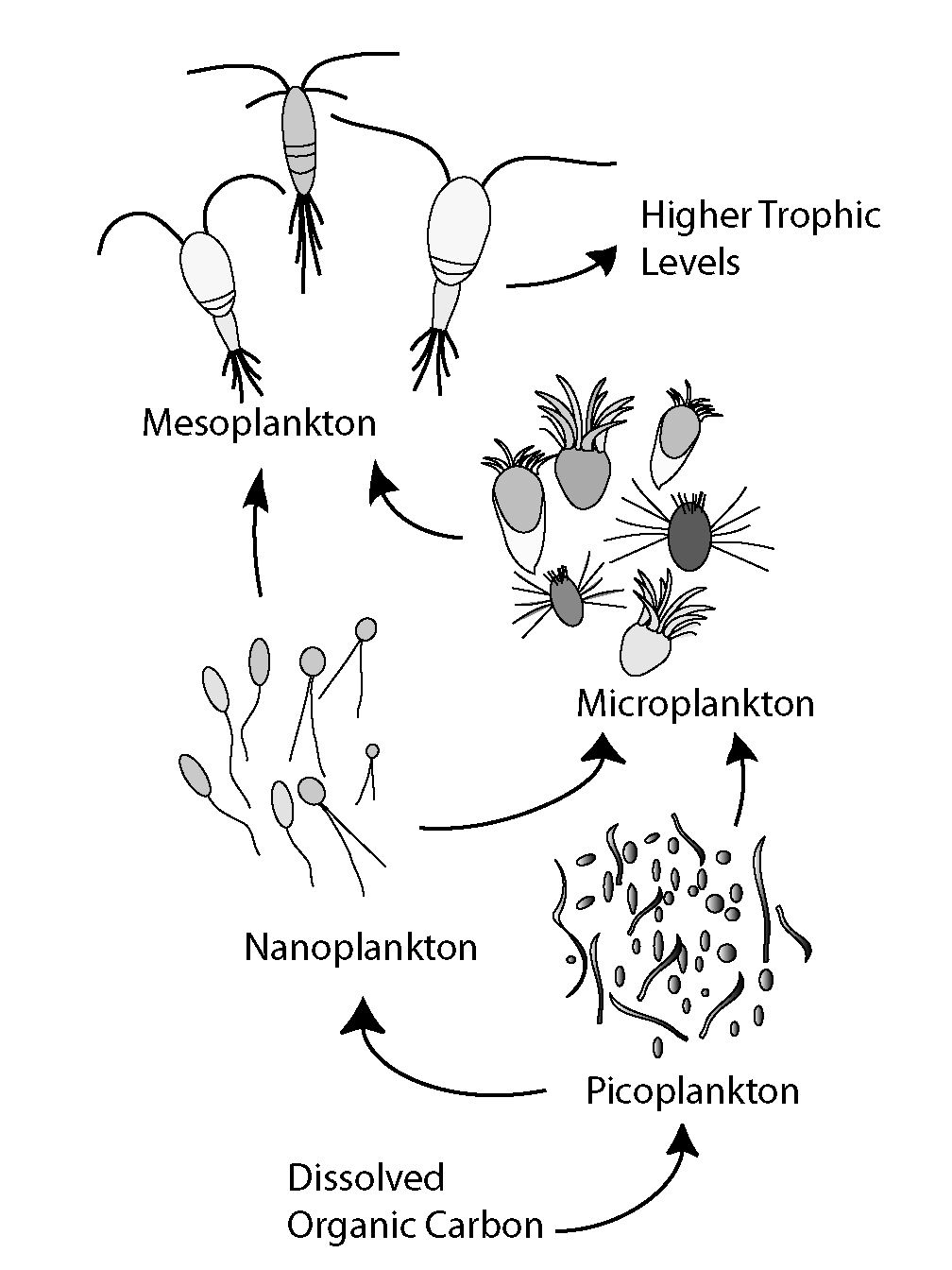|
Picoplankton
Picoplankton is the fraction of plankton composed by cell (biology), cells between 0.2 and 2 μm that can be either prokaryotic and eukaryotic phototrophs and heterotrophs: * photosynthetic * heterotrophic They are prevalent amongst microbial plankton communities of both freshwater and marine ecosystems. They have an important role in making up a significant portion of the total biomass of phytoplankton communities. Classification In general, plankton can be categorized on the basis of physiological, taxonomic, or dimensional characteristics. Subsequently, a generic classification of a plankton includes: * Bacterioplankton * Phytoplankton * Zooplankton However, there is a simpler scheme that categorizes plankton based on a logarithmic size scale: * Macroplankton (200–2000 μm) * Micro-plankton (20–200 μm) * Nanoplankton (2–20 μm) This was even further expanded to include picoplankton (0.2–2 μm) and fem-toplankton (0.02–0.2 μm), as well as net plankton, ultrap ... [...More Info...] [...Related Items...] OR: [Wikipedia] [Google] [Baidu] |
Phytoplankton
Phytoplankton () are the autotrophic (self-feeding) components of the plankton community and a key part of ocean and freshwater Aquatic ecosystem, ecosystems. The name comes from the Greek language, Greek words (), meaning 'plant', and (), meaning 'wanderer' or 'drifter'. Phytoplankton obtain their energy through photosynthesis, as trees and other plants do on land. This means phytoplankton must have light from the sun, so they live in the well-lit surface layers (euphotic zone) of oceans and lakes. In comparison with terrestrial plants, phytoplankton are distributed over a larger surface area, are exposed to less seasonal variation and have markedly faster turnover rates than trees (days versus decades). As a result, phytoplankton respond rapidly on a global scale to climate variations. Phytoplankton form the base of marine and freshwater food webs and are key players in the global carbon cycle. They account for about half of global photosynthetic activity and at least half o ... [...More Info...] [...Related Items...] OR: [Wikipedia] [Google] [Baidu] |
Microplankton
Marine microorganisms are defined by their habitat as microorganisms living in a marine environment, that is, in the saltwater of a sea or ocean or the brackish water of a coastal estuary. A microorganism (or microbe) is any microscopic living organism or virus, which is invisibly small to the unaided human eye without magnification. Microorganisms are very diverse. They can be single-celled or multicellular and include bacteria, archaea, viruses, and most protozoa, as well as some fungi, algae, and animals, such as rotifers and copepods. Many macroscopic animals and plants have microscopic juvenile stages. Some microbiologists also classify viruses as microorganisms, but others consider these as non-living. Marine microorganisms have been variously estimated to make up about 70%, or about 90%, Modified text was copied from this source, which is available under Creative Commons Attribution 4.0 International License of the biomass in the ocean. Taken together they form th ... [...More Info...] [...Related Items...] OR: [Wikipedia] [Google] [Baidu] |
Biomass (ecology)
Biomass is the mass of living biological organisms in a given area or ecosystem at a given time. Biomass can refer to ''species biomass'', which is the mass of one or more species, or to ''community biomass'', which is the mass of all species in the community. It can include microorganisms, plants or animals. The mass can be expressed as the average mass per unit area, or as the total mass in the community. How biomass is measured depends on why it is being measured. Sometimes, the biomass is regarded as the natural mass of organisms ''in situ'', just as they are. For example, in a salmon fishery, the salmon biomass might be regarded as the total wet weight the salmon would have if they were taken out of the water. In other contexts, biomass can be measured in terms of the dried organic mass, so perhaps only 30% of the actual weight might count, the rest being water. For other purposes, only biological tissues count, and teeth, bones and shells are excluded. In some application ... [...More Info...] [...Related Items...] OR: [Wikipedia] [Google] [Baidu] |
Zooplankton
Zooplankton are the heterotrophic component of the planktonic community (the " zoo-" prefix comes from ), having to consume other organisms to thrive. Plankton are aquatic organisms that are unable to swim effectively against currents. Consequently, they drift or are carried along by currents in the ocean, or by currents in seas, lakes or rivers. Zooplankton can be contrasted with phytoplankton (cyanobacteria and microalgae), which are the plant-like component of the plankton community (the " phyto-" prefix comes from , although taxonomically ''not'' plants). Zooplankton are heterotrophic (other-feeding), whereas phytoplankton are autotrophic (self-feeding), often generating biological energy and macromolecules through chlorophyllic carbon fixation using sunlightin other words, zooplankton cannot manufacture their own food, while phytoplankton can. As a result, zooplankton must acquire nutrients by feeding on other organisms such as phytoplankton, which are generally smaller t ... [...More Info...] [...Related Items...] OR: [Wikipedia] [Google] [Baidu] |
Flagellate
A flagellate is a cell or organism with one or more whip-like appendages called flagella. The word ''flagellate'' also describes a particular construction (or level of organization) characteristic of many prokaryotes and eukaryotes and their means of motion. The term presently does not imply any specific relationship or classification of the organisms that possess flagella. However, several derivations of the term "flagellate" (such as " dinoflagellate" and " choanoflagellate") are more formally characterized. Form and behavior Flagella in eukaryotes are supported by microtubules in a characteristic arrangement, with nine fused pairs surrounding two central singlets. These arise from a basal body. In some flagellates, flagella direct food into a cytostome or mouth, where food is ingested. Flagella role in classifying eukaryotes. Among protoctists and microscopic animals, a flagellate is an organism with one or more flagella. Some cells in other animals may be flage ... [...More Info...] [...Related Items...] OR: [Wikipedia] [Google] [Baidu] |
Ciliate
The ciliates are a group of alveolates characterized by the presence of hair-like organelles called cilia, which are identical in structure to flagellum, eukaryotic flagella, but are in general shorter and present in much larger numbers, with a different wikt:undulating, undulating pattern than flagella. Cilia occur in all members of the group (although the peculiar Suctoria only have them for part of their biological life cycle, life cycle) and are variously used in swimming, crawling, attachment, feeding, and sensation. Ciliates are an important group of protists, common almost anywhere there is water—in lakes, ponds, oceans, rivers, and soils, including anoxic and oxygen-depleted habitats. About 4,500 unique free-living species have been described, and the potential number of extant species is estimated at 27,000–40,000. Included in this number are many Ectosymbiosis, ectosymbiotic and endosymbiotic species, as well as some Obligate parasite, obligate and Facultative paras ... [...More Info...] [...Related Items...] OR: [Wikipedia] [Google] [Baidu] |
Rotifer
The rotifers (, from Latin 'wheel' and 'bearing'), sometimes called wheel animals or wheel animalcules, make up a phylum (Rotifera ) of microscopic and near-microscopic Coelom#Pseudocoelomates, pseudocoelomate animals. They were first described by John Harris (writer), Rev. John Harris in 1696, and other forms were described by Antonie van Leeuwenhoek in 1703. Most rotifers are around long (although their size can range from to over ), and are common in freshwater environments throughout the world with a few Seawater, saltwater species. Some rotifers are free swimming and truly planktonic, others move by inchworming along a substrate, and some are Sessility (zoology), sessile, living inside tubes or gelatinous holdfast (biology), holdfasts that are attached to a substrate. About 25 species are colonial (e.g., ''Sinantherina semibullata''), either sessile or planktonic. Rotifers are an important part of the freshwater zooplankton, being a major foodsource and with many specie ... [...More Info...] [...Related Items...] OR: [Wikipedia] [Google] [Baidu] |
Copepod
Copepods (; meaning 'oar-feet') are a group of small crustaceans found in nearly every freshwater and saltwater habitat (ecology), habitat. Some species are planktonic (living in the water column), some are benthos, benthic (living on the sediments), several species have Parasitism, parasitic phases, and some continental species may live in limnoterrestrial habitats and other wet terrestrial places, such as swamps, under leaf fall in wet forests, bogs, springs, ephemeral ponds, puddles, damp moss, or water-filled recesses of plants (phytotelmata) such as bromeliads and pitcher plants. Many live underground in marine and freshwater caves, sinkholes, or stream beds. Copepods are sometimes used as Ecological indicator, biodiversity indicators. As with other crustaceans, copepods have a larval form. For copepods, the egg hatches into a Crustacean larvae#Nauplius, nauplius form, with a head and a tail but no true thorax or abdomen. The larva molts several times until it resembles the a ... [...More Info...] [...Related Items...] OR: [Wikipedia] [Google] [Baidu] |
Carbon Cycle
The carbon cycle is a part of the biogeochemical cycle where carbon is exchanged among the biosphere, pedosphere, geosphere, hydrosphere, and atmosphere of Earth. Other major biogeochemical cycles include the nitrogen cycle and the water cycle. Carbon is the main component of biological compounds as well as a major component of many rocks such as limestone. The carbon cycle comprises a sequence of events that are key to making Earth capable of sustaining life. It describes the movement of carbon as it is recycled and reused throughout the biosphere, as well as long-term processes of carbon sequestration (storage) to and release from carbon sinks. To describe the dynamics of the carbon cycle, a distinction can be made between the ''fast'' and ''slow'' carbon cycle. The fast cycle is also referred to as the ''biological carbon cycle''. Fast cycles can complete within years, moving substances from atmosphere to biosphere, then back to the atmosphere. Slow or geological cycles (a ... [...More Info...] [...Related Items...] OR: [Wikipedia] [Google] [Baidu] |
Abundance (ecology)
In ecology, local abundance is the relative representation of a species in a particular ecosystem. It is usually measured as the number of individuals found per sample. The ratio of abundance of one species to one or multiple other species living in an ecosystem is referred to as relative species abundances. Both indicators are relevant for computing biodiversity. A variety of sampling methods are used to measure abundance. For larger animals, these may include spotlight counts, track counts and roadkill counts, as well as presence at monitoring stations. In many plant communities the abundances of plant species are measured by plant cover, i.e. the relative area covered by different plant species in a small plot. Abundance is in simplest terms usually measured by identifying and counting every individual of every species in a given sector. It is common for the distribution of species to be skewed so that a few species take up the bulk of individuals collected. Relative spe ... [...More Info...] [...Related Items...] OR: [Wikipedia] [Google] [Baidu] |
Microbial Loop
The microbial loop describes a trophic pathway where, in aquatic systems, dissolved organic carbon (DOC) is returned to higher trophic levels via its incorporation into bacterial biomass, and then coupled with the classic food chain formed by phytoplankton-zooplankton-nekton. In soil systems, the microbial loop refers to soil carbon. The term microbial loop was coined by Farooq Azam, Tom Fenchel et al. in 1983 to include the role played by bacteria in the carbon and nutrient cycles of the marine environment. In general, dissolved organic carbon (DOC) is introduced into the ocean environment from bacterial lysis, the leakage or exudation of fixed carbon from phytoplankton (e.g., mucilaginous exopolymer from diatoms), sudden cell senescence, sloppy feeding by zooplankton, the excretion of waste products by aquatic animals, or the breakdown or dissolution of organic particles from terrestrial plants and soils. Bacteria in the microbial loop decompose this particulate detritus t ... [...More Info...] [...Related Items...] OR: [Wikipedia] [Google] [Baidu] |








